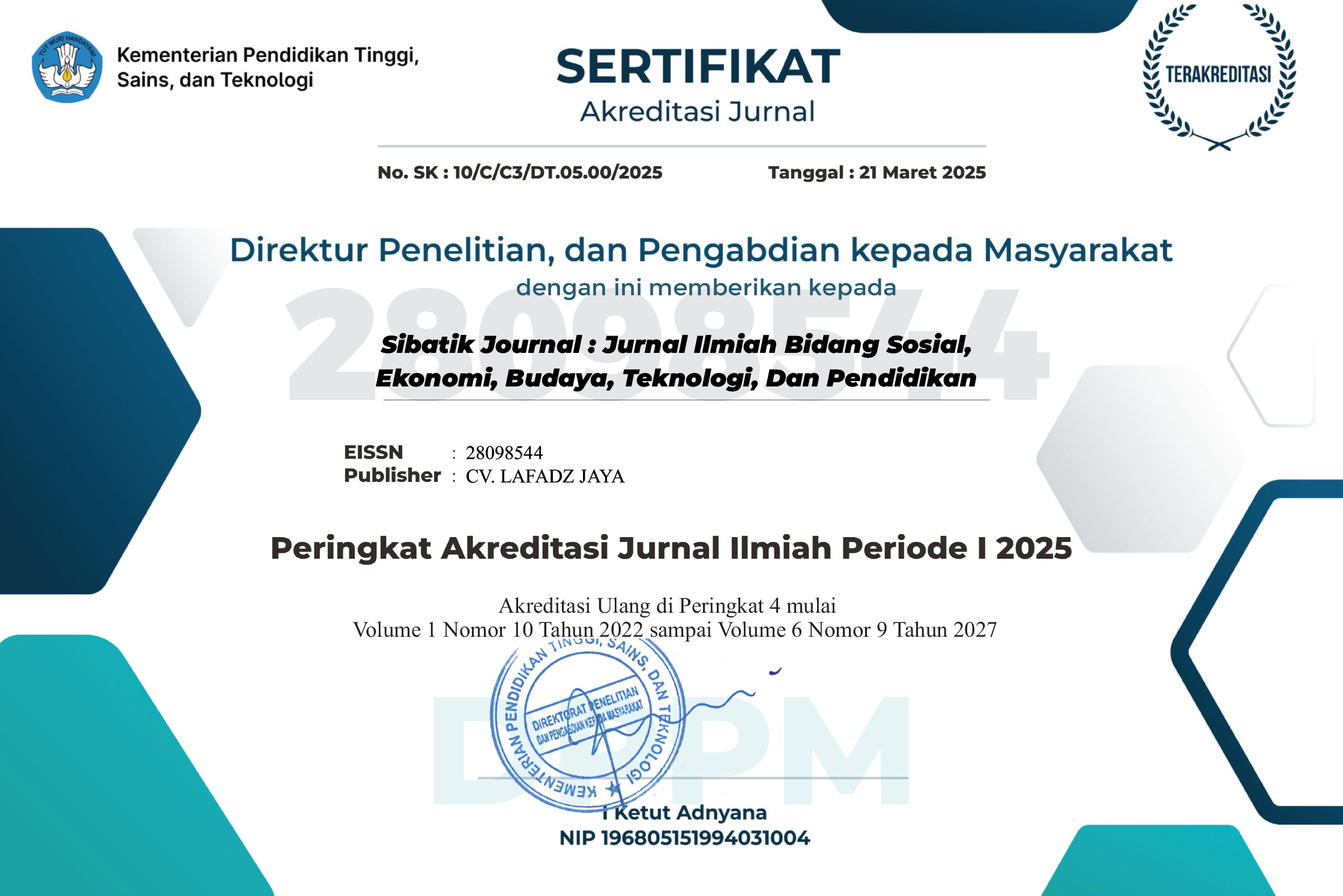A CASE STUDY OF IMPLEMENTING DIFFERENTIATED INSTRUCTION IN SOCIAL STUDIES TEACHING AT A JUNIOR HIGH SCHOOL IN BANYUWANGI
Main Article Content
Sasi Andriani
The objective of this article is to examine a case study on the utilization of differentiated learning approach in teaching at a Junior High School located in the Singojuruh District, Banyuwangi, East Java. The author employs a case study as a research method grounded in an interpretive paradigm. The participants in this study are 30 seventh-grade students. They were requested by the school principal to engage in a demonstration of differentiated instruction alongside one of the teacher facilitators from Banyuwangi Regency. Data were collected through pre-observation interviews, direct observations, and post-observation interviews. The research findings indicate that well-designed lessons using the differentiated learning approach can provide maximum benefits for students with varying levels of abilities. Moreover, this approach also enhances student engagement in the classroom learning process. Additionally, this study also offers several suggestions for future research.
Baecher, L., Artigliere, M., Patterson, D. K., & Spatzer, A. (2012). Differentiated instruction for English language learners as “variations on a theme” teachers can differentiate instruction to support English language learners. Middle School Journal, 43(3), 14-21.
Bandura, A. (2005). The Evolution of Social Cognitive Theory. In K. G. Smith & M. A. Hitt (Eds.), Great Minds in Management (pp. 9–35). Oxford: University Press.
Cassady, J. C., Speirs Neumeister, K. L., Adams, C. M., Cross, T. L., Dixon, F. A., & Pierce, R. L. (2004). The differentiated classroom observation scale. Roeper Review, 26(3), 139-146.
Chen, M. J., Fan, H. H., Guo, C. Y., & Kang, J. L. (2020). How do they transform? The story of two primary schools about curriculum leadership and development in Taiwan curriculum reform. International Journal of Social Sciences & Educational Studies, 7(1).
Chien, Chin-Wen. (2015). Analysis of Taiwanese elementary school English teachers’ perceptions of designs, and knowledge constructed about differentiated instruction in content, Cogent Education, 2(1), DOI: 10.1080/2331186X.2015.1111040
Fredricks, J. A., Blumenfeld, P. C., & Paris, A. H. (2004). School engagement: Potential of the concept, state of the evidence. Review of Educational Research, 74(1), 59-109.
Hapsari, A., Ammar, M. H., & Ghali, M. I. (2020). Student teachers’ experiences on task-based language teaching: A narrative inquiry. Edulangue, 3(2), 103-126. https://doi.org/10.20414/edulangue.v3i2.1953
Hallam, S., & Ireson, J. (2005). Secondary school teachers' pedagogic practices when teaching mixed and structured ability classes. Research Papers in Education, 20(1), 3-24.
Hedegaard, M. (2012). The zone of proximal development as basis for instruction. In An
introduction to Vygotsky (pp. 234- 258). Routledge.
Isro'iyah, L., & Herminingsih, D. I. (2023). Teaching Culture of Others through English Literature: English. International Journal of Language and Literary Studies, 5(2), 136-146.
Jager, T. de. (2016). Perspectives of teachers on differentiated teaching in multi-cultural South African secondary schools. Studies in Educational Evaluation. 53, 115- 121. https://doi.org/10.1016/j.stueduc.2016.08.004
Lavania, M., & Nor, F. B. M. (2020). Barriers in differentiated instruction: A systematic review of the literature. Journal of Critical Reviews, 7(6), 293–297. https://doi.org/10.31838/jcr.07.06.51
Lodico, M. G., Spaulding, D. T., & Voegtle, K. H. (2010). Methods in educational research: From theory to practice (Vol. 28). John Wiley & Sons.
Lunsford, K. J. (2017). challenges to implementing differentiated instruction in middle school classrooms with mixed skill levels (Unpublished Dissertation). Walden University. Retrieved from https://scholarworks.waldenu.edu/dissertations
Rahman, K., Imansyah, I., & Utama, I. M. P. (2019). Investigating the effect of self-regulated strategy development on tertiary EFL students' writing skills. Edulangue, 2(1), 19- 35. https://doi.org/10.20414/edulangue.v2i1.696
Subban, P. (2006). Differentiated instruction: A research basis. International education journal, 7(7), 935-947.
Tomlinson, C. A. (2001). How to differentiate instruction in mixed-ability classrooms. ASCD.
Tomlinson, C. A. (2005). Grading and differentiation: paradox or good practice? Theory into Practice, 44(3), 262-269.
Valiandes, S. (2015). Evaluating the impact of differentiated instruction on literacy and reading in mixed ability classrooms: Quality and equity dimensions of education effectiveness. Studies in educational Evaluation, 45, 17-26.
Wei, B., & Ou, Y. (2019). A comparative analysis of junior high school science curriculum standards in Mainland China, Taiwan, Hong Kong, and Macao: Based on revised Bloom’s taxonomy. International Journal of Science and Mathematics Education, 17(8), 1459-1474.

























